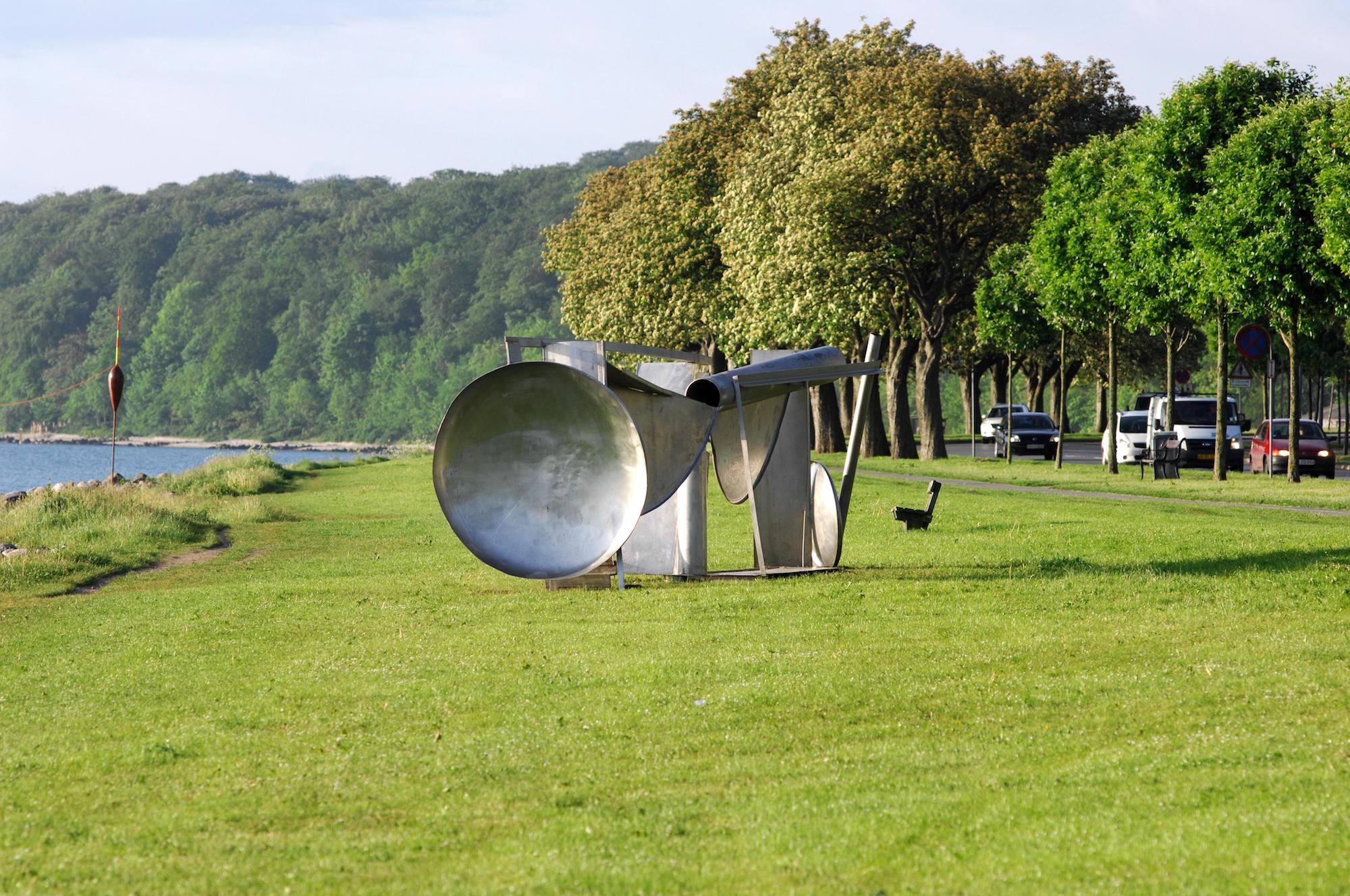
Sir Anthony Caro, double tent (1987/1993), Sculpture by the Sea, Aarhus – Denmark 2009. Photo Clyde Yee.
By Dr. Michael Hill
Author and Lecturer, National Art School, Sydney
A recurrent motif in discussions of sculpture over the last forty years has been a suspicion of object-based monumentality, in contrast to more process-orientated and relational work. Underlying this is an erosion of confidence in the very idea that something might be worth monumentalising. Although sculpture’s embrace of everyday life has an historical logic, it is peculiar that much of it cannot survive outside the crèche of the art-world, or, worse still, detached from a power-point. There has been a certain loss of robustness and independence, which for a statue amounts to sustainability. Sculpture that touches the ground lightly can be flimsy, requiring inordinate maintenance; sculpture that is dematerialised too often relies on electricity (where does that come from?), or isn’t there at all, leaving a vacuum to be filled with text.
Environmental brutality is the reality of sculpture since sculpture began. While there is beauty in works that weather along with their surroundings, the appropriate response is normally one of physical resilience. It is no accident that the preferred materials for sculpture have been marble, granite, bronze, and their industrial-era equivalents: they are heavy and strong, therefore hard to dislodge and able to withstand unexpected loads. Not falling apart is an under-rated virtue.
The environment also includes public scrutiny. A lot of sculpture sits unseparated from civic life, in the public spaces that emerge from circulatory corridors. When, as at Sculpture by the Sea, human traffic folds into an exhibition the scrutiny becomes keen, perhaps more severely than in a gallery. The public who bothers to look at sculpture is less gullible than critics of populism would admit. Most, and one can only generalise about the those who make the effort to inspect art in the first place, are unwilling to automatically dismiss work they don’t understand: mystery is worthwhile when there is a promise of resolution. However, most are unwilling to accept that anything is sculpture simply because someone says so. If that were the case, why bother to use words, why bother at all?
Sculpture stands naked and alone. At open-air festivals, apart from bolting it to the ground for security, it does not have even a pedestal to frame and legitimise its performance. Outdoor sculpture can be viewed from all angles, examined at close range, touched and tested to ensure it is real. In fact sculpture needs to be touched. Sculptors make work with their hands and good sculpture very often is made so that viewers might run their hands across it. For curatorial reasons this is unfeasible with precious works, but the ideal remains: you need to caress some things to understand them.
And it stands naked in the sun. The visual correlate of tactility is modulation, and the sun, or even moon, is the active agent. Ideal lighting is for painting. Sculpture has to deal with light that is uneven, unsympathetic, and sometimes awful: so glaring that one barely see and form is reduced to lit solid and dark void; half-tones are obliterated and surface treatment within shadows is impenetrable because pupils have contracted to pinholes. Yet changeability has rewards: colour and shape have an explosive clarity in the charged air before a storm; angle-ground stainless steel at twilight is something to see; a relief transforms from morning to afternoon, as first the back and then front faces the sun.
The majority of sculpture is made in an isolated studio. It is rarely made in competition with nature, and it is hardly ever site-specific. It is an object to be looked at. Sculptors should know that when they are finished their work will be released into the open, where it will have to fend for itself.